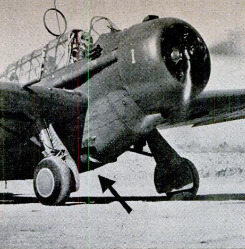-
Title (Dublin Core)
-
Before the bomber observations: hot ships take over as eyes of the army
-
Article Title and/or Image Caption (Dublin Core)
-
Title: Before the bomber observations: hot ships take over as eyes of the army
-
extracted text (Extract Text)
-
WHEN young Howard
P. Olsen joined up
with the Army as an air
observer, he had no idea
he would soon be up to his
ears in some of the fastest,
most exciting, rapidly
changing doings in mili-
tary science. But as mat-
ters are moving now, he
may even turn out to be a
romantic figure. That would surprise no-
body more than Howie. He wasn’t looking
for glory when he joined the 126th Observa-
tion Squadron.
Observation outfits had been the chore
boys of the air force. The observer's work
was of the utmost importance. It called for
intense specialization, technical knowledge,
and mathematical precision. But it hadn't a
bit of glamor about it. An observer was
the Army flyer who was not part of the
swashbuckling GHQ striking power. An ob-
server could never be an ace. Once in battle
he would take plenty of risk, get none of
the credit, and never be in on the kill.
Meanwhile he floated around in a bum-
bling old-lady type of plane with a goldfish-
bowl canopy, a popgun armament, and a top
speed of 175 miles an hour, telling the field
artillery whether it was on or off the target.
With present-day speeds of fighter planes, a
fellow, might as well be flying a captive
balloon, for all the security it gave him.
But that ended with the first bomb on
Pearl Harbor. Today no plane is too hot for
an observer. And when faster planes are
built, observers will fly them too. American
observers have been getting their new
methods ready ever since they were de-
veloped out of British experience. All they
needed was a little more training with their
new ships to be ready to fly right into the
jaws of the enemy to get the vital informa-
tion without which there can be no victory.
This article about new observation meth-
ods begins with Howie Olsen, not through
any intention to glorify him above any of
the hundreds of other fine young fellows
who will be doing a similar job, but because
it’s a good idea to get these things down to
human terms. War communiqués are cold-
blooded things, but they cover the exploits
of hot-blooded young men.
‘When you hear that a fleet of American
‘bombers has blasted the living daylights out
of the Japs or Nazis at some far-distant
point, just remember that some fellow like
Howie was there first— perhaps several
times—to pick out the objective, to make
photographs which would show the value of
attacking it.
Maybe he flew in the nose of a light twin-
engined bomber, with a pilot and two gun-
ners behind. Quite likely he flew over enemy
territory all by himself, with only his own
speed and marksmanship to protect him—
in a P-38 pursuit ship high in the substrato-
sphere, diving down below the clouds,
running off a series of photographs, and
zooming upward again to high-tail for home.
Going into the Army was about the last
thing Howie Olsen wanted to do back in
1940. He had finished the course in com-
merce at the University of Wisconsin in
1939 and was an up-and-at-'em young busi-
ness man of Madison. He had worked his
way through college running a filling sta-
tion; now he had two filling stations and
also a good job with a firm of public ac-
countants, traveling around the Middle West
auditing the books of business corporations.
He wasn't interested in the military life,
but when he felt his number coming up, late
in 1940, he began to look around for a spot.
About this time Maj. Paul D. Meyers was
called back from New York to Wisconsin by
Governor Heil to organize an air-observation
squadron for the Wisconsin National Guard.
Paulie Meyers was a Wisconsin football hero
back in the days before and after the last
war. Howie had been a football and basket.
ball man at Madison too, and Meyers asked
him to join up. Howie jumped at the chance. |
So did a lot of other fellows. Paulie Meyers
‘was able to pick his 115 enlisted men from
1,500 applicants who were eager to serve
under him. The 126th Squadron was green
When called to active duty at Fort Dix, N.J,,
last June, but it had all the makings of a
crack outfit. |
As a newly commissioned observer lieu-
tenant—not a pilot—Olsen soon found that
he had an intensive course of studies cut out
for him. To be an efficient observer, he had
to know photography; he had to be able to
handle radio, either key or voice, (There's
a lot of technique in talking through a little
voice radio, and making yourself under-
stood.) He had to master navigation, to |
Jnow exactly where he saw activity or took
a photograph. He had to study meteorology
and practice gunnery. On a military mis-
sion, the observer would be in charge of
everything except the actual piloting of the
plane, and he had to know his job from the
roots up. |
Above all, he had to understand what he
was seeing when he looked down from a |
plane on the crazy-quilt landscape moving
below, not only to recognize it but also to |
understand it in terms of military tactics
and strategy. He must know the signifi-
cance of what he saw, and what to report
back by radio to his base. That was new to |
Olsen, but as to understanding the landscape
he had a head start. He had flown planes |
himself for 350 hours while he was in col- |
lege. His roommate had been manager of
the local airport, and Howie had made the
most of it.
It was only because he didn’t yearn to
spend years in the Army that he hadn't gone
out for training as a flying cadet. But now,
as he began to learn the significance of the
new developments in observation, he began
to reconsider. When I last saw him, just
before the declaration of war, he was plan-
ning to put in for Kelly Field, so that he
could combine his training as observer and
pilot. It seems quite likely that he will be-
come an observer-pilot. Certainly we are
going to need plenty of them.
Observation ideas were knocked galley-
west in the first days of active fighting in
Europe. Britain, like the United States, had
developed a special type of slow, easygoing
plane for observation, built to give plenty of
opportunity to look around. Thought was
dominated by the World War concept of a
stabilized front, with planes used to observe
the effectiveness of artillery fire and events
close to the battle line. But promptly the
British found that in a quiet sector of fight-
ing, their mortality among observers ran
at the rate of 60 percent a week. They had
to recruit and train a whole new crop of
observers, and put them in a new type of
ship. That ship was a Spitfire, stripped
down so it could carry plenty of fuel, and
equipped with a fixed, automatic camera.
The camera could see and retain far more
informing facts than could a speeding flyer.
And back at the bases, ingenious new meth-
ods were developed to interpret the pictures.
The plane used for training by the 126th
Squadron was of the old observation type,
the 0-47, a fine, well-mannered ship carry-
ing three men—pilot, observer, and a rear
gunner with a .30 caliber machine gun on a
revolving mount. It was a fine training ship
from which to make photographs, look for
armored columns and supply trains on dusty
roads, report back by radio.
One day when I was with the 126th during
the Carolina maneuvers, one of Olsen's col-
leagues, Lieutenant Jefferson, discovered
an “enemy” airport loaded up with transport
planes warming up for a take-off with air-
borne infantry. He made photographs, tried
desperately to get a response from his home-
base radio as he broadcast the news. Then a
trio of Red army pursuits dived at him, and
he was “shot down.” He came back to his
base with his theoretically nonexistent pic-
ture, thinking his mission had failed. But
then he heard that his message had got
through. Blue bombers had dashed in and
“annihilated” the enemy force.
The significant thing about this little in-
cident was that Jefferson was “shot down.”
In just a few days of operations in a quiet
part of the Carolina front, with only one
plane going on a mission at a time, practi-
cally the whole flying personnel was “shot
down” at least once. That would probably
be 100-percent mortality per week. but of
course no such thing will be per-
mitted.
All idea of using the O-47’s in
actual battle, of course, had long
been discarded. The 126th was
expecting soon to be equipped
with A-20's. The A-20A is a light
bomber, otherwise known as the DB-7, the |
same plane which the British equip with
heavy guns and transform into a night |
fighter called the Havoc. The Havoc has shot
down more Nazi bombers at night than any |
other plane, and has been more effectively
used by the British than any other Ameri- |
can ship. That was good enough reason why |
the 126th did not yet have them.
The A-20A’s from the light bombardment
squadrons were used for observation mis-
sions during maneuvers, however. They
made dozens of such flights sneaking along
close to the ground at high speed until ready
to soar up and take a look, and not one of
them was “shot down.” With this ship for |
visual work, and adapted pursuit ships—the
P-40, the P-38, and the P-43—for photo-
graphic planes, American observers are go-
ing to be well equipped.
The increased speed of the observer in-
creases the importance of photography, and
newly developed use of the old principle of
the stereoscope has multiplied it. In its
photographic work the 126th was learning to
make pictures in sets of three, overlapping
60 percent. Doing that properly is a matter
of figuring out the relationship between
speed and altitude, together with the speed
of the motor which rolls the 8-by-10 film in |
the camera. But the pursuit ships being
fitted for this kind of work, and soon to be
in action, are equipped with a fully auto-
matic 5-by-5 camera, carrying 120 expo-
sures, with an intervalometer which can be
set to take the triple sets automatically.
This camera is being set in some planes ver-
tically, and in some at an angle of 45 de-
grees. By banking the plane with the
vertical camera an oblique shot can be made,
such as is often desired for the perspective
it gives. Similarly the plane with the oblique
camera can make vertical shots as it banks
down suddenly out of the clouds. The Brit-
ish use this type in the Spitfire.
The 126th Squadron’s mobile trailer dark-
room can finish (Continued on page 220)
up a set of these pictures into glossy prints
in 55 minutes after the observer hits the
ground, and then the pictures are sped off
for one of the most interesting processes
in the modern Army.
Interpretation of air photographs is an art
which has been developed intensively since
the first World War. It involves mainly the
understanding of shadows as they appear in
the pictures. Different objects cast different
types of shadows, and also in the art of
camouflage you can't paint a shadow to look
plausible at every time of day. By compar-
ing photographs made on successive days, the
interpreters often are able to detect signs
of important activity which would seem to
have been well concealed. A grove of trees
may be set up to look most convincing, but
if it grew there since last week, it obviously
is a phony.
It has been only recently that extensive
use has been made of the stereoscopic prin-
ciple, on which the effectiveness of human
vision is based. A man's two eyes see two
different pictures from two points of view,
and it is through the blending of these two
in the brain that we are able to perceive
depth and judge distance. The same effect
is obtained in photography by taking two
pictures from different points of view, and
viewing them through a stereoscope.
The 60-percent overlap in aerial photog-
raphy of course exaggerates the difference
in point of view, and exaggerates the stereo-
scopic effect. The set of three pictures
enables the interpreter to look at the same
objective stereoscopically from two direc-
tions. Looked at through a stereoscope, ob-
jects in sight seem to leap from the surface
of the ground.
But the Army engineers, who have been
instructing large classes of officers in air
interpretation at Fort Belvoir, Md., are not
content to let their pupils use stereoscopes
to help them at the job. These interpreters
have to learn so to control their eye muscles
that they can look at a different picture with
each eye, and make them blend into a
stereoscopic image. If you see an Army of-
ficer appearing wall-eyed, with a distant
look, he probably has been practicing stereo-
scopic vision. With a little practice, one can
become remarkably skillful at this. And in
wartime speed is an important factor.
At least that's one thing Howie Olsen
won't have to learn. They don't ask ob-
servers to cultivate the glassy stare.
-
Language (Dublin Core)
-
Eng
-
Date Issued (Dublin Core)
-
1942-03
-
pages (Bibliographic Ontology)
-
82-89,220
-
Rights (Dublin Core)
-
Public domain
-
Archived by (Dublin Core)
-
Sami Akbiyik
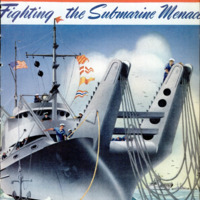 Popular Science Monthly, v. 140, n. 3, 1942
Popular Science Monthly, v. 140, n. 3, 1942
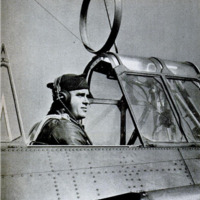 Screenshot_1.png
Screenshot_1.png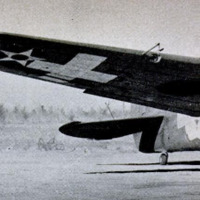 Screenshot_2.png
Screenshot_2.png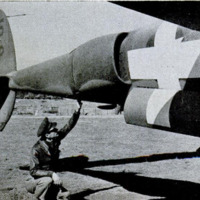 Screenshot_3.png
Screenshot_3.png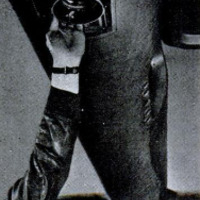 Screenshot_4.png
Screenshot_4.png Screenshot_5.png
Screenshot_5.png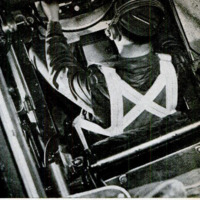 Screenshot_6.png
Screenshot_6.png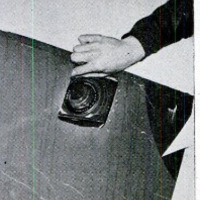 Screenshot_7.png
Screenshot_7.png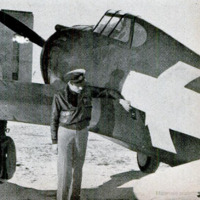 Screenshot_8.png
Screenshot_8.png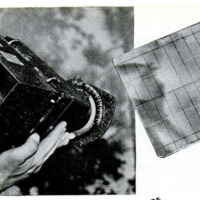 Screenshot_9.png
Screenshot_9.png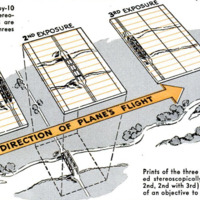 Screenshot_10.png
Screenshot_10.png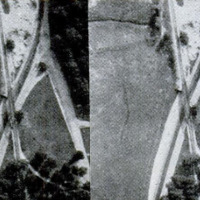 Screenshot_11.png
Screenshot_11.png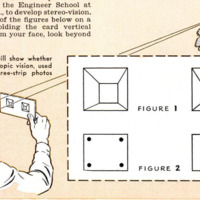 Screenshot_12.png
Screenshot_12.png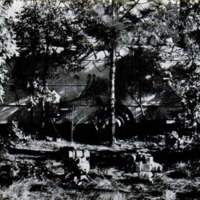 Screenshot_13.png
Screenshot_13.png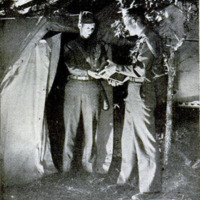 Screenshot_14.png
Screenshot_14.png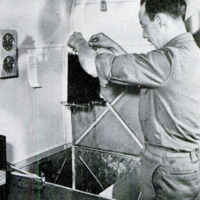 Screenshot_15.png
Screenshot_15.png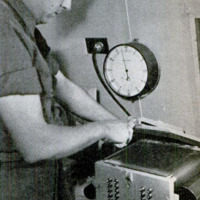 Screenshot_16.png
Screenshot_16.png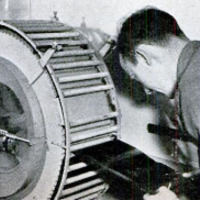 Screenshot_17.png
Screenshot_17.png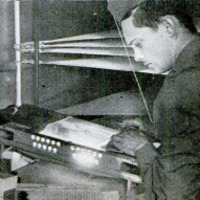 Screenshot_18.png
Screenshot_18.png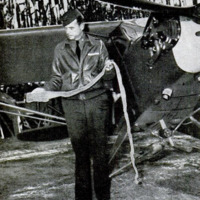 Screenshot_19.png
Screenshot_19.png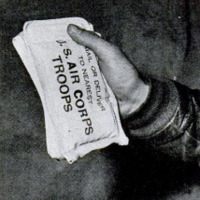 Screenshot_20.png
Screenshot_20.png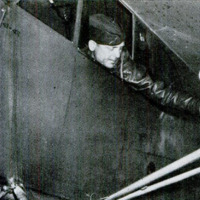 Screenshot_21.png
Screenshot_21.png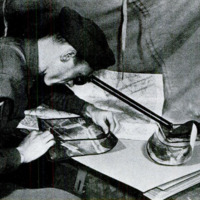 Screenshot_22.png
Screenshot_22.png




